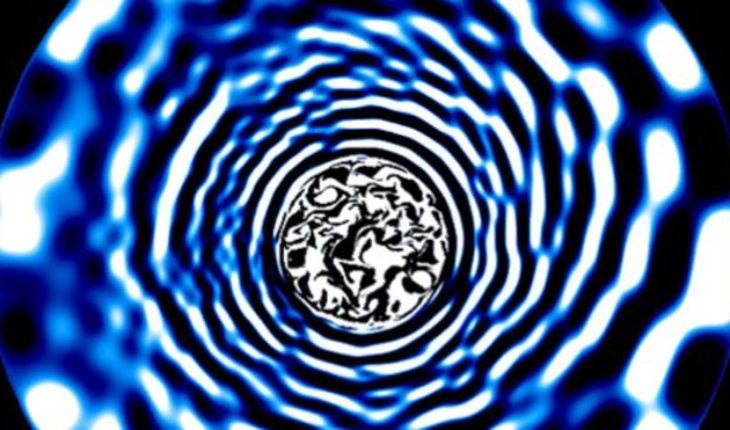Just as the seismologists obtain information about the interior of the earth investigating the waves that produce Earthquakes, the Astrosismología allows access to the interior of the stars through the movements generated in them.
A new study, published in the journal Nature Astronomy, demonstrates how Astrosismologia is helping to reveal secrets of very massive stars called Blue Supergiants.
The “Music” inside these stars sounded long ago, but only now “have opened the doors of the concert,” said Sergio Simón-Díaz, researcher at the Institute of Astrophysics of the Canary Islands and the University of La Laguna, in Spain, and one of the authors of the I am a student.
The use of Astrosismología is possible thanks to state-of-the-art space telescopes such as Kepler and Tess, from NASA, which allow to observe variations in star brightness for prolonged periods of months.
“These stars at all times are having these movements inside, but only now have we had the possibility to observe them on a continuous basis,” said Simón-Díaz.
“We have taken the hearing aid and have properly listened to the music that the stars emit.”
Star Earthquakes
The Astrosismologia investigates the variability of the brightness of the stars.
“All the stars although we see them as light points do not always have the same brightness,” said Simón-Díaz.
“This variation of the surface brightness is due to the inland movements, pulsations and physical phenomena of this type that are transmitted to the surface and make the light altered by those stellar earthquakes.”
Astrosismología is possible thanks to state-of-the-art telescopes such as Kepler, which observe variations in stellar brilliance during periods prolongadosLa Astrosismología investigates the light coming from the stars but not at a precise moment but in its Variations in time, revealing data on the inside.
“When earthquakes are generated on earth, these waves are transmitted differently depending on the medium they propagate, it is the same thing that happens with the sounds that are not transmitted the same in the air as in water,” explained the astronomer.
“Then, thanks to the way those sounds are transmitted as we go through different materials we can have information about the physical properties in internal layers of the Earth or in the stars, thanks to the study of these waves”.
The mystery of the black hole that shoots “bullets” of plasma and drags the space-time
What a dead planet teaches us about what will happen to the earth when the sun disappears
Blue supergiants
The study focused on “Blue supergiants”
What does that term mean?
One of the best known blue supergiants at the popular level is the warrior’s advanced foot in the Orion constellation, the star Rigel”Tenemos different types of stars by two issues. One is the mass, there are stars like the Sun, others have a mass less than the sun, they are smaller when born, and others have a mass much greater mass than the sun, “said Simón-Díaz.
The blue supergiants are massive stars that are born with more than ten times the mass of the sun.
The second criterion, as the astronomer explained, is that the stars are born, evolve and die.
“We have different evolutionary phases, for example, the sun is now in an intermediate time of its life and at some point it will evolve to what is called a red giant, and more forward to a phase of planetary nebula and die like a white dwarf , is what happens to solar-type stars. ”
“In the case of the stars of great Mass, they are born like stars that are called Blue by their temperature and when they evolve they become supergiants blue because they grow in size, and at some point of their life they transform in supergiants red, very large stars But colder, and then they end up exploding like supernovae. ”
The color of the stars depends on their temperature. Betelgeuse, for example, is a red supergiant, a more evolved phase of Estrella masivaSimón-Díaz pointed out that one of the best known blue supergiants at the popular level is the warrior’s advanced foot in the Orion constellation.
The hind foot, Betelgeuse, is a red supergiant, a more evolved phase of massive star. And the advanced foot is the blue supergiant called Riegel.
The colors of the stars depend on their temperature.
Depending on the temperature, the stars are passing in the spectrum of a reddish color when they are cold to a yellow color like the sun and when they are much hotter to a blue color, said the researcher of the Institute of Astrophysics of the Canary Islands.
The impressive image of Antares, the dying star that is becoming a supernova
“You need the earthquake”
The new study revealed that the blue supergiants have a variation in characteristic brightness, which indicates properties inside that astronomers can investigate applying techniques astrosismología.
“The new point here is that there are these earthquakes in these stars,” said Simón-Díaz.
“By observing them for a sufficient time we have seen that there are waves in them, so we can apply these techniques to access the inside.”
“You need the earthquake to be able to apply astrosismología techniques. It could have happened that Pulsasen not have variations, and if you do not have the earthquake you can not know anything. ”
translated from Spanish: What is Astrosismología, the technique that allows to reveal the “music” inside the Stars
May 8, 2019 |





